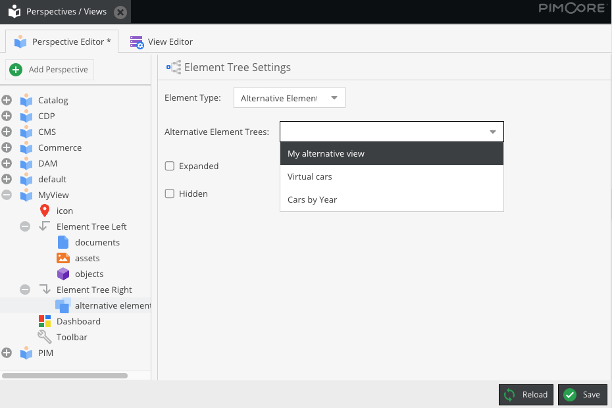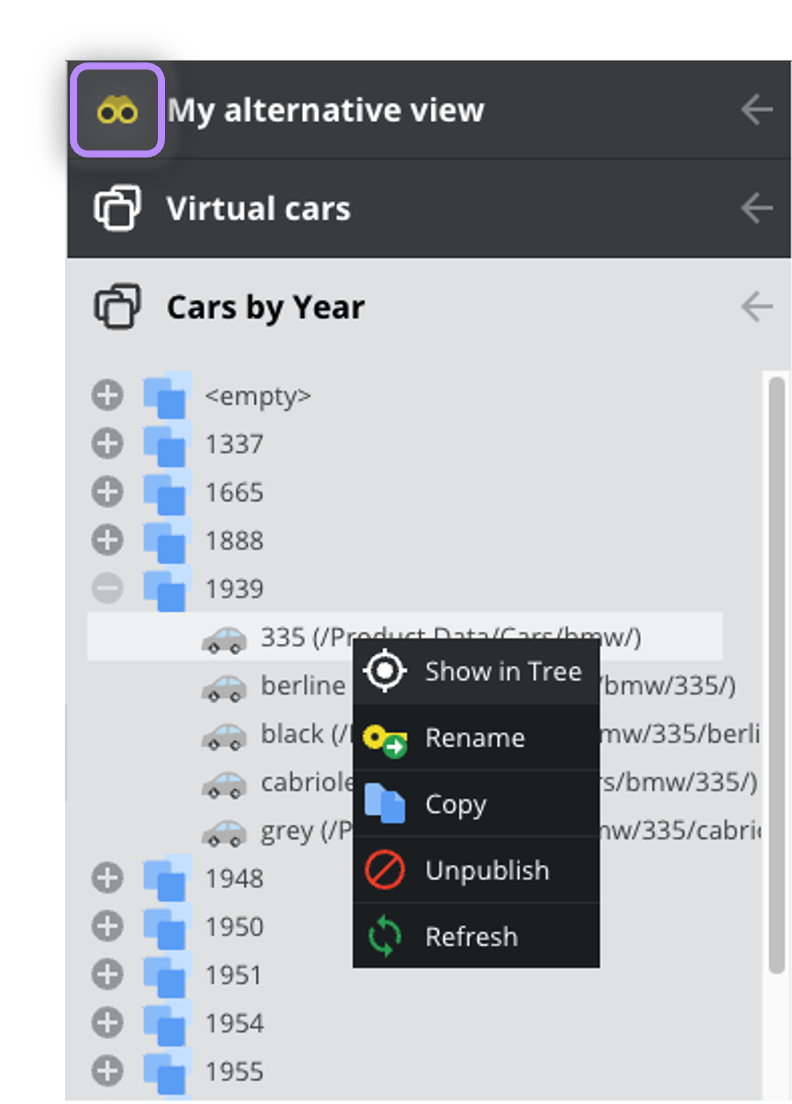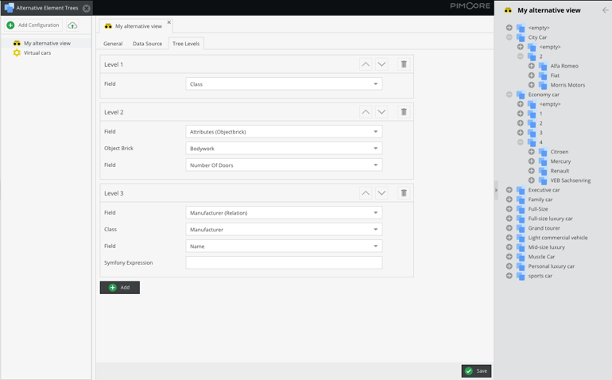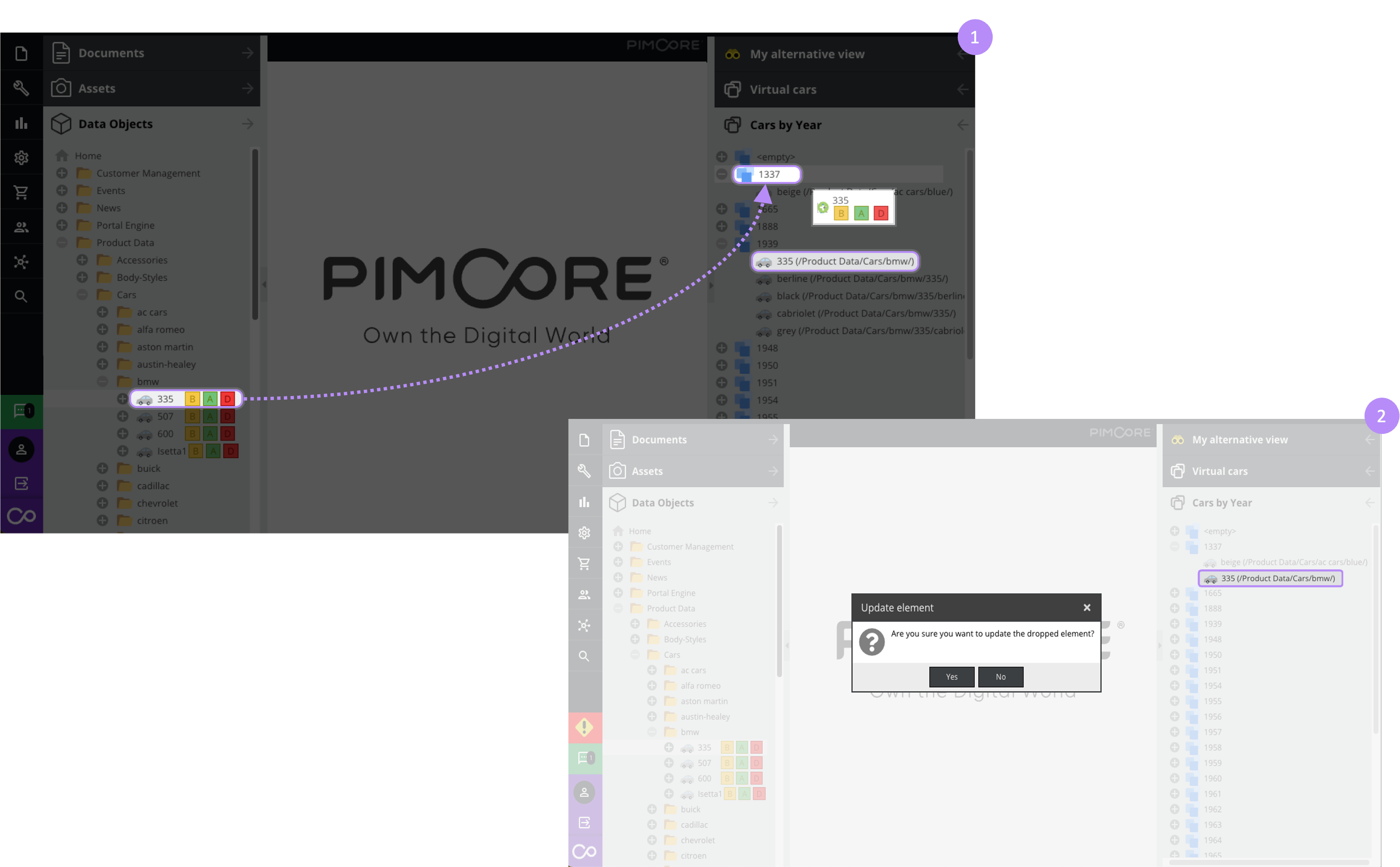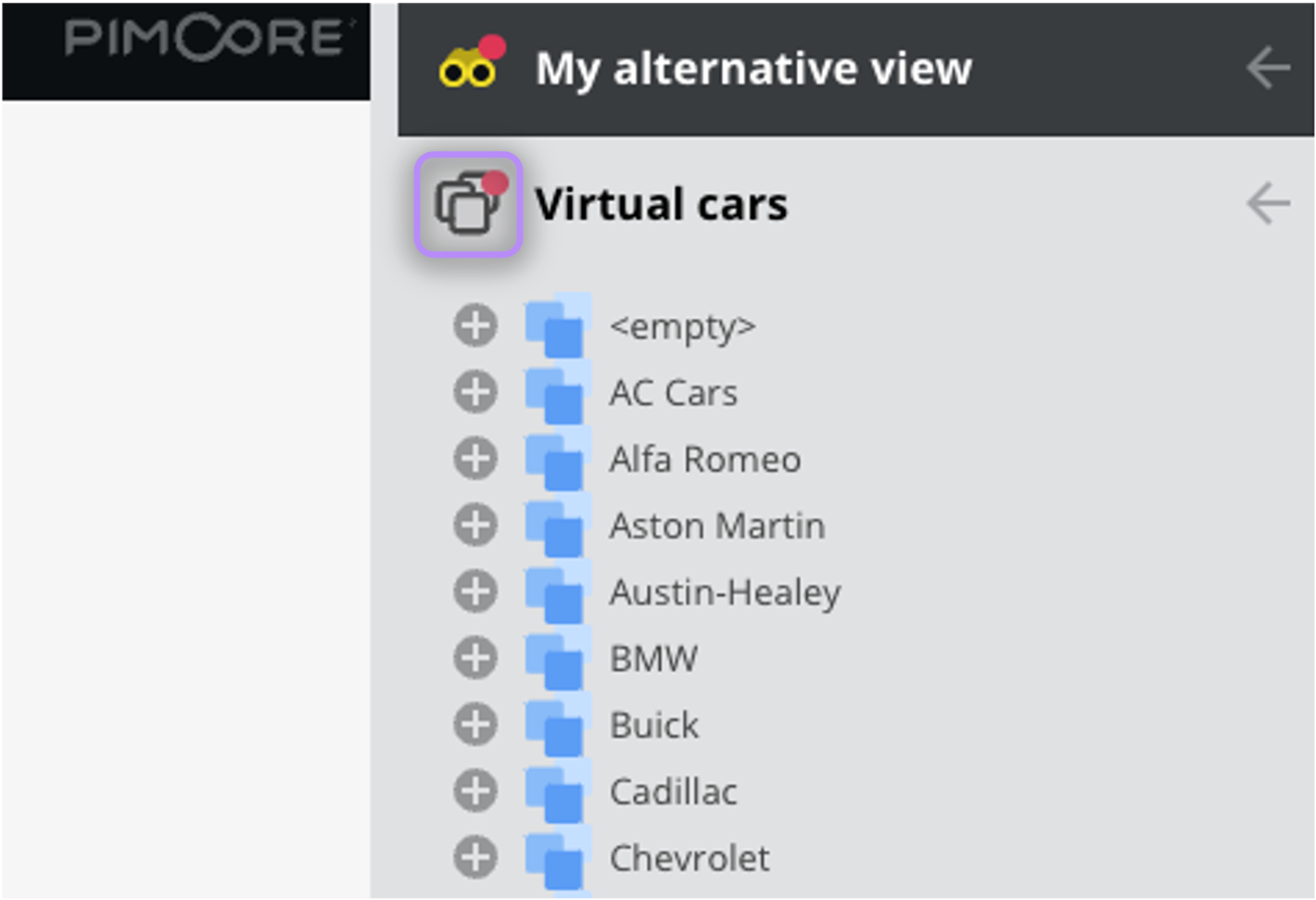Alternative Element Tree Visualization
This page explains the alternative views provided by alternative element trees.
An alternative tree can be added to the perspective of your choice through Settings > Perspectives/Views in the Perspective Editor. By right-clicking Element Tree Left or Element Tree Right in the configuration tree of the perspective, click Add and select Alternative Element Tree from the Element Type dropdown menu.
If the Show in Default Perspective option is enabled in the tree configuration, your alternative tree view will automatically appear in the Default Perspective.
Alternative Tree View
The alternative element trees are displayed just as the original ones, in the accordion menu. If you defined a custom icon while configuring your tree, this one will appear next to your alternative tree name as follows:
An alternative tree contains virtual folders corresponding to the attributes-based levels selected in the tree configuration. For a configuration with a first level based on Class field (for our sample, a car category), a second level based on a Number of Doors Objectbrick field, and a third one based on a Manufacturer Name Relation field for an alternative Car tree:
The alternative tree view will display:
- A first level of virtual folders corresponding to all available
Classattributes of theCarObjects in the original element tree; - A second level of virtual folders with the
Number of Doorsattributed to eachCarObject available in our first level as child items; - A third level of virtual folders corresponding to all available
Manufacturer Nameattributed to theCarObjects sharing theClassandNumber of Doorsattributes of the parent virtual folders; - The elements from the original element tree as the last level of the alternative tree - for our sample, these elements are all the
CarObjects from a specificClass, with a determinedNumber of Doors, and produced by a particularManufacturer.
As for the original tree, you can open these last-level elements by clicking them or select the refresh, show in tree, copy, rename (with the necessary permissions) or publish/unpublish (with the necessary permissions) actions through their context menu.
Because they depend on the tree configuration, the virtual folders cannot be modified.
If your element tree includes elements for which the selected attribute value is empty, an additional empty virtual folder will be created and displayed on top of your list, containing these elements.
As for the original element trees, you can access a grid view by clicking a virtual folder and an element editor by clicking an element in the alternative tree.
You can drag & drop elements from your alternative tree to drop targets in the various Pimcore editors or the element trees corresponding to your element type. If the Allow drag and drop of elements option is enabled in the tree configuration, you can also add elements from an original element tree to a virtual folder of your alternative tree if:
- you drag only one element at once;
- you have the right permission to publish a new version of the element you want to drop in the alternative tree;
- the virtual folder you want to drop the element to is based on a single value attribute (e.g.
Year); - all of the alternative tree levels adapters support the element values and have distinct value definitions.
Dropping an Object in one of your alternative tree's virtual folder also updates the attribute's value of your Object. For example, dropping a Car Object with 1939 as Year attribute to a 1337 virtual folder will update the Object's Year value to 1337.
Processing of the Alternative Tree
The Tree Calculation indicator is displayed next to the icon of the Alternative Element Tree in the accordion menu when the tree calculation is still in progress. This indicator implies that the data shown in the frontend could be outdated.
The polling of this indicator is done every minute.
You can customize the interval by setting the progressIndicatorPollInterval parameter in the according tree configuration.
By setting the interval to 0, the polling will be disabled.
